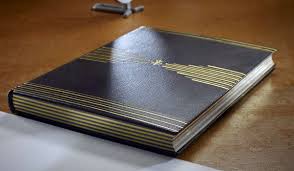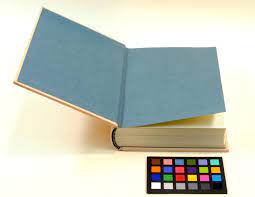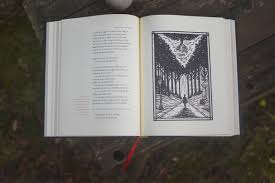
Decorative spine binding is more than a structural necessity—it is a refined art form that combines craftsmanship, design, and functionality. Throughout bookbinding history, artisans have transformed the spine of a book into a canvas for expression, using stitching, raised bands, gilding, and ornamentation to enhance both beauty and durability. This article explores the evolution of decorative spine binding, key techniques used by binders, and the cultural importance of this specialized craft.

The Spine as a Design Element
While the primary role of a book’s spine is to support and hold together the text block, it also serves as the most visible part of a book when shelved. Early bookbinders recognized this and began incorporating decorative features that signaled not only the book’s title but also its value, origin, or owner.
In historical libraries, elaborately bound spines helped identify texts in large collections. Over time, the spine evolved into a showcase of the binder’s skill, conveying prestige and artistic refinement.
Historical Development of Spine Decoration
Decorative spine binding traces back to the medieval period when monastic bookbinders used wooden boards and leather covers. Early spines were functional, but as bookbinding techniques improved during the Renaissance, spines became richly adorned.
The use of raised bands—created by sewing sections over cords—offered both structural integrity and decorative potential. Binders began gilding titles and designs between these bands using gold leaf and heated brass tools, especially in France, Italy, and England.
By the 18th and 19th centuries, decorative spine binding flourished. Elaborate tooled patterns, blind stamping, colored leather inlays, and gold titling became common among luxury and custom bindings. Collectors and bibliophiles commissioned bespoke bindings where the spine was as important as the cover artwork.
Techniques of Decorative Spine Binding
Bookbinders today continue to use a range of decorative techniques on spines, blending traditional methods with modern innovation:
1. Raised Bands
Sewing the book block onto cords naturally creates raised bands on the spine. These bands are then covered with leather and decorated, adding texture and elegance. Modern binders may simulate raised bands using false cords for aesthetic effect.
2. Gilding and Gold Tooling
Gold tooling involves applying gold leaf to the spine using engraved tools heated over a flame. This process is labor-intensive and requires precision but results in ornate, shimmering titles, borders, and motifs. Titles are usually set in decorative typefaces, while fleurons, vines, and heraldic symbols are common embellishments.
3. Blind Tooling
Unlike gilding, blind tooling involves pressing designs into the leather without any color or metallic leaf. It creates a subtle, embossed effect that plays with light and texture.
4. Leather Inlay and Onlay
These techniques involve cutting and pasting colored leathers into or onto the spine surface to form shapes or patterns. The process requires meticulous cutting and alignment but allows for complex and colorful designs.
5. Sewn Spine and Exposed Stitching
In some modern bindings, binders intentionally leave stitching visible. Using decorative thread and patterns, such as Coptic, French link, or Japanese stab binding, they turn the structural elements into artistic features.
Cultural and Artistic Significance
Decorative spine binding has long reflected the cultural and social status of the book’s owner. Nobility, religious leaders, and scholars often commissioned unique bindings that expressed their wealth, taste, or piety.
In modern times, fine binders and artists use the spine to push creative boundaries. Art book editions, exhibition catalogs, and personal journals often feature hand-bound spines that combine innovation with traditional craftsmanship.
Institutions like the British Library and the Morgan Library still preserve and showcase decorative bindings as part of the world’s artistic heritage.
Conclusion
The art of decorative spine binding elevates the book from a vessel of information to a masterpiece of craftsmanship. Through techniques like gilding, tooling, and inlay, bookbinders create spines that speak volumes—literally and metaphorically. As long as there are books to bind and stories to tell, the spine will remain a powerful space for artistic expression and functional elegance.





